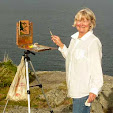My Dream of Maine by Bobbi Heath
24"x24" oil on canvas
Have you been thinking about buying your first original painting? Or about growing your collection? There are lots of things to consider when buying a painting. I was recently interviewed by Adam Ziemba for an article on this subject, called 7 Expert Tips You Need to Know Before Purchasing Art. I thought I’d give you a synopsis here. But first I'll show a few paintings I particularly like by some favorite artists.
Rising Tide at Wadsworth Cove by Carol L. Douglas
12"x16" oil on canvas
Bright Red by Joelle Feldman
4"x6" pastel on sanded paper
Winter Evensong by Poppy Balser
7"x11" water color
Bluebird Day by Suzanne deLesseps
14"x11" pastel on paper
Below are the seven tips I gave Adam. For more information on each tip, the article is here on Adam's website.
- For me the most important thing to consider when buying a painting is that it speaks to me.
- My husband and I buy artwork in galleries, directly from artists, and online.
- When I buy my first painting from an artist, I like to see six or eight paintings by that artist to make sure the one I’m drawn to is consistent with their body of work.
- Buying paintings online is a great way to have a variety or work to choose from, and many artists find it a very effective sales channel.
- When considering a painting online, be sure that you understand the size of a painting.
- If you find an artist you love and would like them to create a commission for you, don’t be afraid to ask if that’s a possibility.
- Buying a painting is an investment in enjoyment, both for yourself and for your family.







































